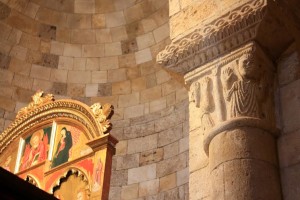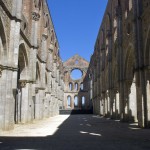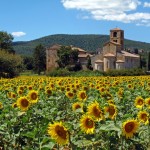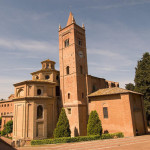Abbadia Isola
 An ancient place of rest along the Via Francigena, the village owes its name to the ancient Cistercian abbey dedicated to San Salvatore, which was founded in 1001 and was later titled Isola (Island) due to the swampy conditions of the site. The abbey exercised considerable power between the twelfth and fourteenth centuries when it controlled lands and surrounding castles, declining only in the 15th century.
An ancient place of rest along the Via Francigena, the village owes its name to the ancient Cistercian abbey dedicated to San Salvatore, which was founded in 1001 and was later titled Isola (Island) due to the swampy conditions of the site. The abbey exercised considerable power between the twelfth and fourteenth centuries when it controlled lands and surrounding castles, declining only in the 15th century.
Currently the religious complex shows a part of the ancient Cistercian monastery, beyond which there is a courtyard enclosed by a picturesque Romanesque church of Lombard style dating back to the XI-XII centuries and a jewel of medieval architecture.
Social Share
Tours
News
Liguria Tourist Guides
02 Aug 2024
(Italiano) Un nuovo libro su Pienza
22 Dec 2020
(Italiano) La prima cosa bella
04 Jul 2020
- Liguria Tourist GuidesTourist guides in Genoa, Portofino and Liguria. Guided tours of Finalborgo, Noli, Albenga, Savona, Dolceacqua, Imperia, Camogli, Rapallo and much more. Excursions to Monaco, Monte Carlo, French Riviera, Cinque Terre.… Read more: Liguria Tourist Guides
- (Italiano) Un nuovo libro su PienzaSorry, this entry is only available in Italian.
Dott. Sara Mammana - Guida Turistica Autorizzata - Via Enzo Mangiavacchi 17 53026 Pienza (SI) P.IVA 01328820525 - +39 340 6739044 - info@tourinvaldorcia.com
Cookie Policy | Privacy Policy: Italiano - English
Cookie Policy | Privacy Policy: Italiano - English









